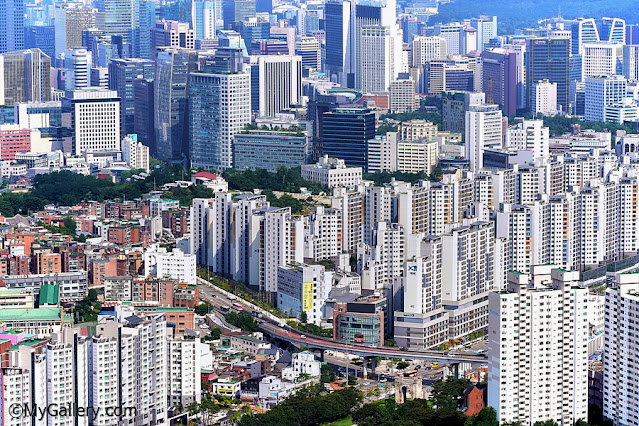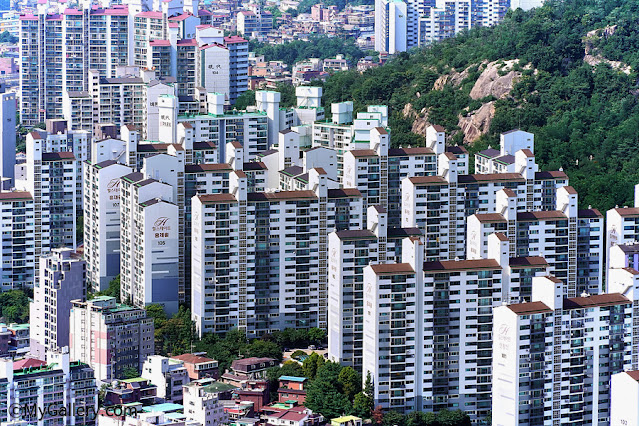This is the view of Seoul from the top of Ansan mountain located in Seodaemun. Seoul has too many buildings and also has a large population. Seoul is historically an old city and was established as the capital of Korea after the Joseon Dynasty.
Hello Seoul
Seoul, officially known as the Seoul Special City, is the capital and largest city of South Korea. It is located in the northwest part of the country, near the western border with North Korea. As the economic, cultural, and political heart of South Korea, Seoul plays a crucial role in the nation's development and global presence.
Let's explore various aspects of Seoul in detail.
About history of Seoul city
Seoul has a long and rich history dating back over two thousand years. It was originally called Wiryeseong during the Three Kingdoms period (57 BC – 668 AD). In 1394, King Taejo of the Joseon Dynasty (1392-1897) established the city as the capital of Korea and renamed it Seoul, which means "Capital City" in Korean. Throughout its history, Seoul has experienced significant cultural, economic, and political changes.
Geography and Location of Seoul
Seoul is situated in the northwestern part of South Korea, approximately 50 kilometers (31 miles) south of the Korean Demilitarized Zone (DMZ), which separates North and South Korea. The city lies along the Han River, which flows through the heart of Seoul, dividing it into two halves: Gangbuk (north of the river) and Gangnam (south of the river).
Population and Diversity of Seoul
Seoul is one of the most populous cities in the world, with a population of over 10 million people, and the greater Seoul metropolitan area has around 25 million residents. The city is a melting pot of cultures, with a mix of traditional Korean heritage and a modern cosmopolitan vibe. People from various backgrounds, including Chinese, Japanese, American, and other expatriates, contribute to the city's diverse atmosphere.
Seoul Landmarks and Attractions
Seoul offers a blend of modern architecture, historical sites, and cultural landmarks. Some of the must-visit places include:
Gyeongbokgung Palace
A majestic palace built during the Joseon Dynasty and one of Seoul's most iconic historical sites.
Bukchon Hanok Village
A traditional Korean village where you can experience the atmosphere of ancient Seoul.
N Seoul Tower: An iconic landmark offering panoramic views of the city.
Myeongdong: A bustling shopping district known for its trendy fashion and cosmetic stores.
Dongdaemun Design Plaza
A futuristic architectural marvel and a hub for fashion and design events.
Hongdae: A vibrant neighborhood known for its youthful energy, street performances, and nightlife.
Seoul National Museum
South Korea's largest museum, housing an extensive collection of artifacts and cultural treasures.
Education and Culture of Seoul
Seoul is home to several prestigious universities, including Seoul National University, Korea University, and Yonsei University. The city has a strong emphasis on education, leading to a highly literate and educated population. Korean culture, known as "hallyu" or the Korean Wave, has gained popularity worldwide, influencing music, films, TV dramas, fashion, and cuisine.
Transportation of Seoul
Seoul has a well-developed and efficient transportation system, including an extensive subway network, buses, taxis, and high-speed train connections to other major cities in South Korea. The Incheon International Airport, one of the busiest airports globally, serves as a major gateway to the city and the country.
Cuisine of Seoul
Korean cuisine is renowned for its flavors and healthiness, and Seoul is the best place to indulge in a wide variety of dishes. From traditional Korean BBQ, bibimbap, kimchi, and spicy stews to modern Korean fusion cuisine, the city offers a delightful culinary experience.
Wonderful Seoul
Seoul's dynamic blend of tradition and modernity, vibrant culture, and economic significance make it a captivating destination for tourists and an essential global city in the 21st century.
By MyGallery.com

















Social Plugin